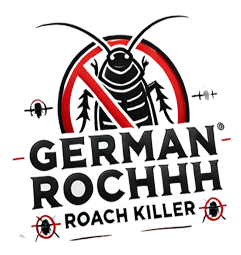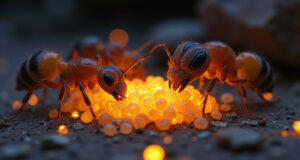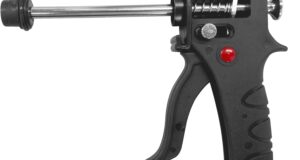German roaches live in many homes around the world. They stay and breed in warm, moist spots. Their body, life steps, and ways to hide help them live well with us.
Introduction to German Roach Biology
We mean the species Blattella germanica. These small roaches breed fast. They live in homes and shops. Warm, damp places offer food and water. Their moves, life steps, and ways to breed all tie close to where they live. A pair of roaches can grow a large group in a short time.
Physical Characteristics and Identification
German roaches show clear signs. Their body parts tie to their look:
- Size: Small and about 1.1 to 1.6 centimeters long.
- Color: Light brown or tan with two dark lines on their backs.
- Wings: They have wings but can barely fly. They run fast.
- Antennae: Long and thin to feel their way around.
These signs help tell them apart from other cockroaches.
Behavior Patterns: Where and How German Roaches Live
German roaches work at night. They hide in cracks, behind appliances, and in cabinets near food and water. Their life ties with their home:
- They use tight, dark spots to hide.
- They eat many things such as crumbs, grease, paper, glue, and soap.
- They move fast. Their legs help them run on walls and ceilings.
- They stick together. They drop scents that bring others close.
Many homes, shops, and clinics see them. Their close tie with our food brings danger.

Reproduction Patterns in German Roach Biology
Their life splits into three parts: egg, nymph, and adult.
-
Egg Stage
The female makes an egg case. The case holds about 30 to 40 eggs. She keeps it for about 48 hours. The case keeps the eggs safe. -
Nymph Stage
The eggs hatch into small, wingless roaches called nymphs. They grow by shedding their skin 5 to 7 times. This stage takes 40 to 125 days. Nymphs look like adults but are smaller. -
Adult Stage
Adults live for about 100 to 200 days. They mate soon after they grow up. A female may lay 4 to 8 egg cases in her life. This may create over 300 new roaches.
Fast breeding can grow a group very fast. One female and her kin may make over a million roaches in a year in the best spots.
Key Factors Affecting German Roach Biology and Population Growth
Some things change how well they live and grow:
- Temperature: They work best in 75°F to 95°F (24°C to 35°C).
- Humidity: Wet air helps eggs and nymphs grow.
- Food: Easy food helps them live faster.
- Shelter: Many hideaways help them stay safe.
- Pesticide resistance: They can live on many sprays.
Effective Control Strategies Based on German Roach Biology
Knowing how roaches live can help us act:
- Keep areas clean. Remove food and water.
- Seal gaps. This stops roaches from entering.
- Use sticky traps. These catch roaches and show where they hide.
- Use baits. These have slow poisons that stop roaches from growing.
- Mix many steps in pest care. This mix works best in the long run.
Because they hide deep in corners, work hard and often to stop them.
Summary: Why Knowing German Roach Biology Matters
German roach biology shows fast breeding and sly ways to hide. Their life steps help explain why they stay so strong. Know their life, hideouts, and moves. This helps you plan the best steps to keep them away. This plan helps anyone at home or who works with pests.
FAQ: German Roach Biology
Q1: How fast do German roaches breed?
A1: They breed quickly. One female may make up to 8 egg cases with 30-40 eggs each. This can grow into many roaches in a few months.
Q2: Where do German roaches hide?
A2: They hide in dark, warm, and tight spaces. Think of cracks in walls, behind appliances, in cabinets, or near sinks.
Q3: How does knowing their biology help control them?
A3: When you know their steps and hideouts, you can aim at weak spots. This makes baits and seals work well.
For more on cockroach life and ways to stop them, visit the Centers for Disease Control and Prevention website at https://www.cdc.gov/parasites/cockroaches/index.html.
By using what you know of German roaches, you gain a better chance to keep your home safe and free from these pests.




